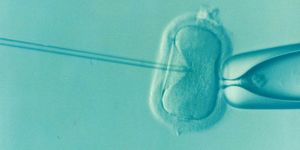The Bionic Leg: Merging Man with Machine
Studies have given amputees hope of moving around. Bionic Leg is the Connection between body and Machine. Image Credit: Telegraph.co.uk
New novel neuroprosthetic leg technology has allowed three amputees all with transfemoral amputation to use and feel their bionic legs as they climb over various obstacles. The technology is based on sensory feedback and has allowed amputees to feel with instinct. Sensory information was delivered through a wireless mode via electrodes through the intact tibial nerve and surgically implanted into the stumps' intact nervous system.
Learn more about bionic technology:
"After all of these years, I could feel my leg and my foot again, as if it were my own leg," says Djurica Resanovic, who lost his leg in a motorbike accident several years ago and that resulted in amputation above the knee.
The studies generated from the clinical trial explains the characterization and implementation of the bionic leg technology.
"It was very interesting. You don't need to concentrate to walk, you can just look forward and step. You don't need to look at where your leg is to avoid falling,” adds Resanovic who completed the clinical trial on the bionic leg prototype. "I could tell when they touched the [big toe], the heel, or anywhere else on the foot. I could even tell how much the knee was flexed."
Findings were published in Science Translational Medicine.
"We showed that less mental effort is needed to control the bionic leg because the amputee feels as though their prosthetic limb belongs to their own body," explains Stanisa Raspopovic, ETH Zurich professor and co-founder of EPFL spin-off SensArs Neuroprosthetics, who led the study. "This is the first prosthesis in the world for above-knee leg amputees equipped with sensory feedback. We show that the feedback is crucial for relieving the mental burden of wearing a prosthetic limb which, in turn, leads to improved performance and ease of use."
Source: Science Daily









